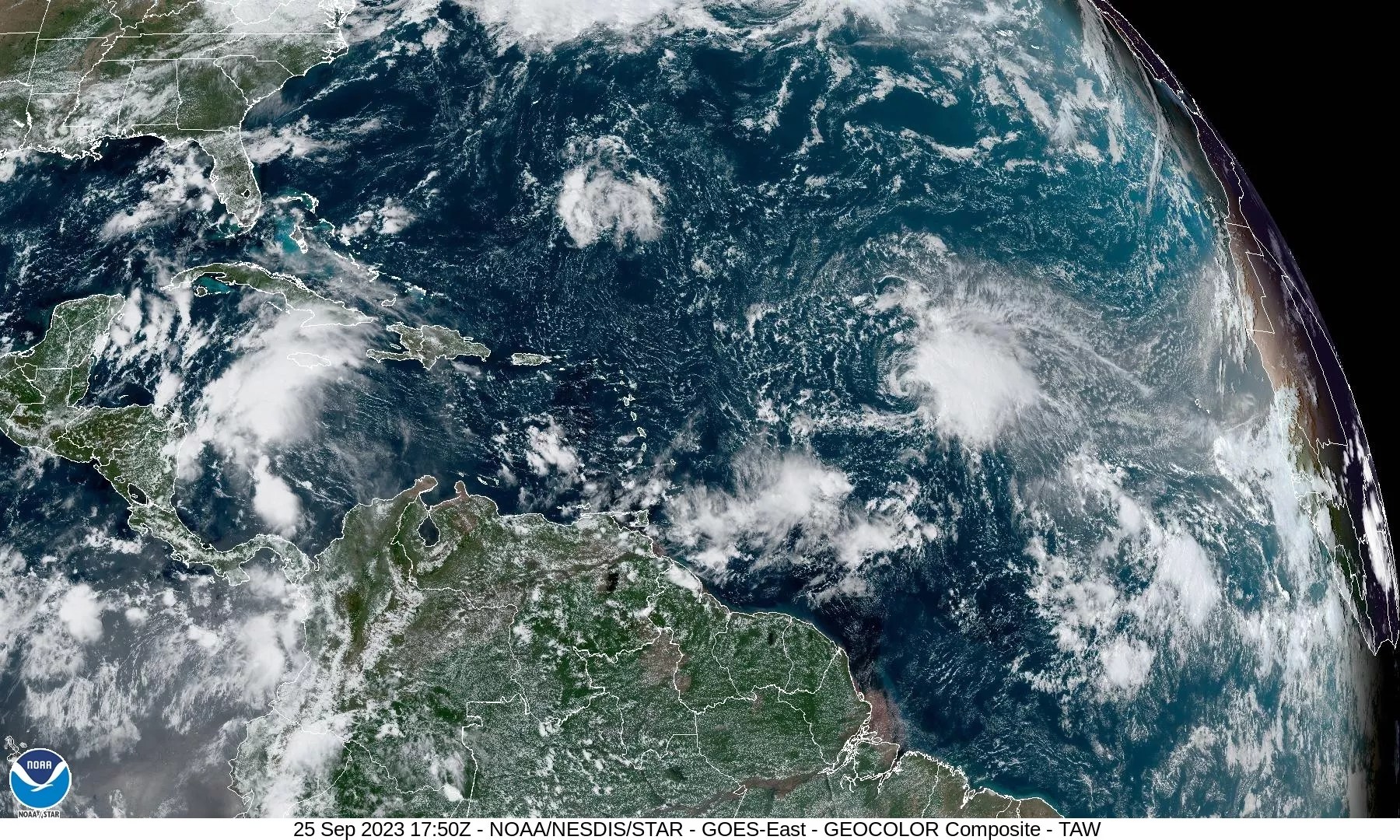
Satellite image from the National Environmental Satellite, Data, and Information Service (NESDIS)

Audio By Carbonatix
With more than a month remaining in the 2023 hurricane season, we’ve already surpassed the average annual tally of named storms as number 16 on the list, Tropical Storm Philippe, churns in the middle of the Atlantic Ocean.
Though this season has spawned a steady string of storms, Florida has avoided becoming the repeat target of tropical systems a la 2004, when the Sunshine State was hit with four hurricanes in six weeks.
That’s no consolation to those whose homes and businesses were wrecked last month in Hurricane Idalia, which caused billions of dollars in damage and flooded Florida’s west coast with a massive storm surge a year after the devastation wrought by Hurricane Ian (the costliest storm in Florida history).
But in the throes of hurricane season, forgive us for looking on the sunny side.

Graphic by National Oceanic and Atmospheric Administration
More good news (no jinx intended) may be on the way as Tropical Storm Philippe follows a welcome pattern that has spelled the end for a few 2023 tropical systems. The storm is forecast to track north of the Caribbean and dissipate in open ocean without posing a major threat to land.
Andrew Hazelton, atmospheric scientist at the University of Miami, pointed to significant deviation in the forecast models for Philippe, though he noted the storm will be encountering wind shear that will likely prevent it from becoming more organized and strengthening in the next few days.
“Thankfully, it’s far enough north that even a decoupled, decaying carcass of a storm would likely stay well north of the Caribbean islands,” Hazelton said on social media.
In addition to Philippe, forecasters are keeping their eyes on the tropical disturbance dubbed Invest 91L off the coast of Africa. The disturbance is expected to develop into a tropical depression, though it’s too early to tell where it’s headed.
A tropical disturbance in the Caribbean, just south of Florida, is brewing as well, though it has only a small chance of developing into a tropical storm. It’s nonetheless expected to bring rain and cloudy weather to South Florida over the coming days.
If a few more weeks pass without a major storm, hurricane-hardened Florida residents may start breathing a collective sigh of relief. Typically, hurricane activity peaks in mid-September and drops off by late October, though there have been notable late-in-the-season exceptions.
For perspective, the average hurricane season spawns 14 named storms, including three major hurricanes. This year, we’ve surpassed the first mark and matched the latter, with more than a month left before the season peters out.
Luck of the meteorological draw in Florida often trumps the sheer quantity of tropical systems in the Atlantic, however, as was the case in 2011, one of the busiest years on record for tropical storms. Most of the 19 tropical or subtropical systems that formed in 2011 did not progress to hurricanes, and those that did steered clear of the Sunshine State. While the southeast U.S. was spared that year, Hurricane Irene devastated New York and New England.
The 2004 hurricane season, which still haunts many a Floridian, had 14 named storms (two less than this year so far), several of which had South Florida in their crosshairs. Hurricanes Charley, Frances, Ivan, and Jeanne battered the state in close succession, leaving thousands of Floridians’ homes waterlogged and in shambles.